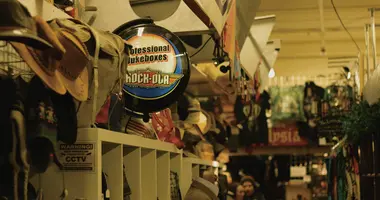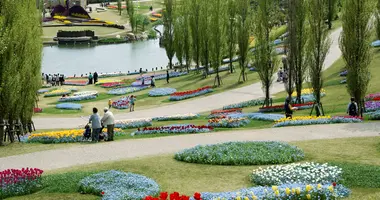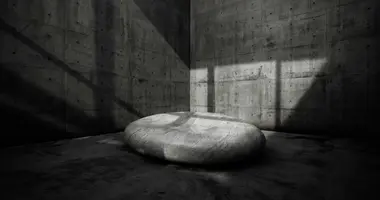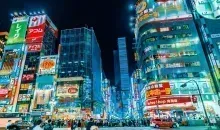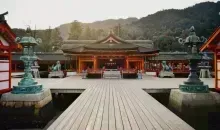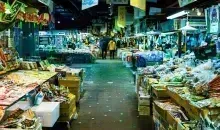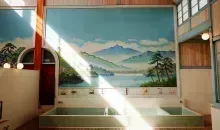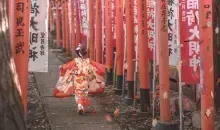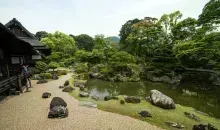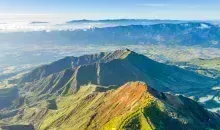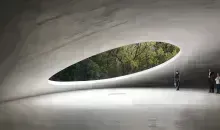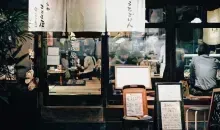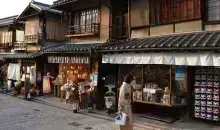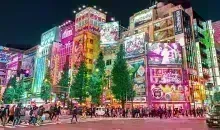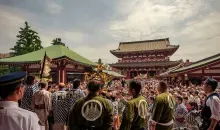Shinagawa 品川
On first impressions, Shinagawa is in an impersonal business district full of skyscrapers. However, this old fishing village once the water's edge has a rich history to discover.
Shinagawa Area Guide
Shinagawa is a Tokyo ward south of the central city, and adjacent to Tokyo Bay. Shinagawa was the first post station on the Edo Period Tokaido highway connecting Nihonbashi in Edo to Kyoto, 500km to the west, and retains that status as an important transit point today.
Nowadays, Shinagawa Station is also the first stop on the Tokaido shinkansen from Tokyo Station, the next stop being Yokohama. (Shinagawa Station is actually a little north of Shinagawa ward, in Minato ward, but is treated as part of Shinagawa here.)
Shinagawa History
References to Shinagawa date back as far back as the eighth century, when the area served as a post station. Shinagawa was a transit point for goods and people to and from the capital on the Tokaido highway - a role reflected in its very name, which translates as "Goods River."
Shinagawa grew in importance in the 17th and 18th century Edo era when travel became more common due to the rule compelling feudal lords all over Japan to spend time in the Shogun's capital then known as Edo (now Tokyo). Shinagawa's importance also grew with its size, added to substantially during and after the Edo area through land reclamation from Tokyo Bay.
Shinagawa retains its post town role even today in having the greatest concentration of hotel accommodation in Tokyo.
East & West of Shinagawa Station
Shinagawa Station had two exits: the western Takanawa exit, and the eastern Konan exit. Each presents a quite different face of Shinagawa.
The more elegant Takanawa district rises to a hill, at the base of which are a cluster of hotels and of leisure facilities facing Shinagawa station over Route 15. The area around and behind the main accommodation area makes for pleasant strolling of its slopes and is home to several embassies.
The Konan district, east of the station, area has been dramatically redeveloped over the past two decades and shows it in its impression of gleaming office-tower modernity, however impersonal. The Konan side does, however, offer some satisfying accommodation, dining and leisure options.
Former Tokaido Street
Traces of Shinagawa's old Edo atmosphere can still be breathed on the Former Tokaido Street (Kyu-Tokaido 旧東海道) running south from Kita Shinagawa Station on the Keikyu Main Railway Line - one stop south of Shinagawa Station, or - for the more adventurous - about 15 minutes' walk from the Konan exit. There are a number of traditional shops, budget guest houses and a variety of restaurants, bars and cafes.
The Former Tokaido Street is pleasant to stroll day or night. There are a couple of places to stay right on the old Tokaido if you wish to continue a tradition dating back hundreds of years.
Eating options on the Former Tokaido Street include izakaya and a number of traditional Japanese restaurants.
Kyu-Tokaido street runs down to Ebara Shrine, which is near the Meguro River with its pretty vermilion-painted bridges. Ebara Shrine's Tenno Matsuri Festival happens on the first weekend in June and involves the transport of a mikoshi by boat to Odaiba Kaihin Park, in a ritual known as the Kappa Matsuri.
Shinagawa Shrine
Shinagawa Shrine is a fairly large shrine located on top of a small hill, and dates from the early 12th century. It is near Shinbanba station two stops south of Shinagawa Station, on the west side of Route 15, five minutes' walk from Ebara Shrine.
The large stone torii gate at the entrance is unusual in having dragons carved into it. Shinagawa Shrine contains a small replica of Mt. Fuji called fujizuka and an impressive stone statue of Daikoku. Ieyasu Tokugawa is believed to have prayed here before heading west to win a decisive victory at the Battle of Sekigahara in 1600, a battle that secured the Tokugawa clan's hegemony in Japan for the next 200 years.
The annual Shinagawa Shukuba Festival in late September sees a mikoshi (portable shrine) carried down from Shinagawa Shrine, paraded through the town and carried back up the hill at dusk. The Oiran Dochu on the Saturday is a parade of women dressed as high-class courtesans, or oiran, in the evening from around 7pm.
Shinagawa Museums
Easily walkable from the Former Tokaido area but closer to the Takanawa Exit of Shinagawa Station are a couple of worthwhile museums only about 100m apart: The Hara Museum of Contemporary Art (Hara Bijutsukan) and the Hisuigensekikan (Jade Ore Museum).
The Hara Museum of Contemporary Art, done in art deco style, was once a private mansion and has a lovely garden. The eclectic art collection includes works by Andy Warhol, Jackson Pollock, Maruyama Okyo and Yayoi Kusama.
The Hisuigensekikan opened in 2002 as a personal collection and exhibits both cut and uncut jade in all shapes, sizes and functions. Visitors can also purchase many of the jade pieces on display here. Both museums are close to the Myanmar Embassy, one of nine Tokyo embassies in Shinagawa ward.
Shinagawa Kumin Park
Shinagawa Kumin Park is a large, green recreational space five stops south of Shinagawa station. The park has multiple types of scenery and facilities, including the Shinagawa Aquarium.
Suzugamori Execution
Ground Memorial Shinagawa was also the site of the Suzugamori execution ground, used during the Tokugawa and early Meiji times from 1651-1871. Here an estimated 100,000 criminals were put to death in a variety of exotic ways including crucifixion, burning and drowning. The spot stood near Tokyo Bay in those days, so victims would be hung up by their feet and drowned as the tide rose. Their bodies would then be displayed on the Tokaido as a warning to others.
There is a plaque marking the site north of Omori-kaigan Station where route 316 turns to the right.
Shinagawa Access
Shinagawa Station is a major railway hub in Tokyo. Shinagawa Station has connections with the JR Yamanote Line, the Tokaido Shinkansen, west to Hamamatsu, Nagoya, Kyoto and Osaka, the Keikyu Main Line to Kawasaki, Yokohama (17 minutes) and Uraga, the Keikyu Airport Line to Haneda Airport (14 minutes), the Keihin Tohoku Line to Ueno Station and Omiya (47 minutes), the Yokosuka Line with trains to Chiba and Narita Airport, Kamakura, Yokosuka and the Narita Express rapid service to Tokyo's main international airport, Narita International Airport (67 minutes).
The Narita Express train to Narita International Airport runs via Tokyo Station and Shinagawa Station with departures from Shinjuku Station, Yokohama and Omiya. Kita-Shinagawa Station is a 15-20 minute walk from Shinagawa Station or just one stop on the Keikyu Main Line. Exit here for the old Tokaido area of Shinagawa with its traditional shops and restaurants.


